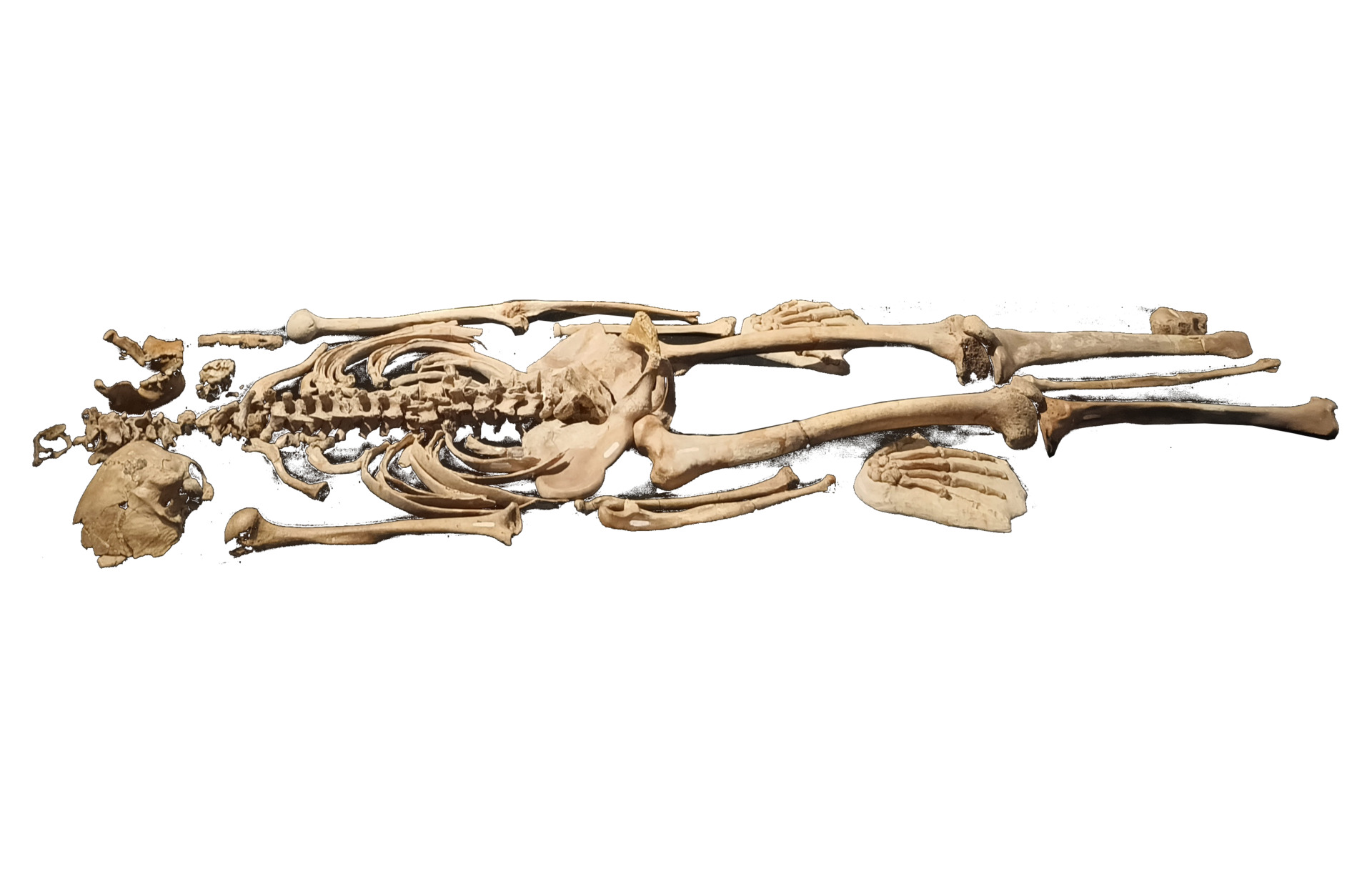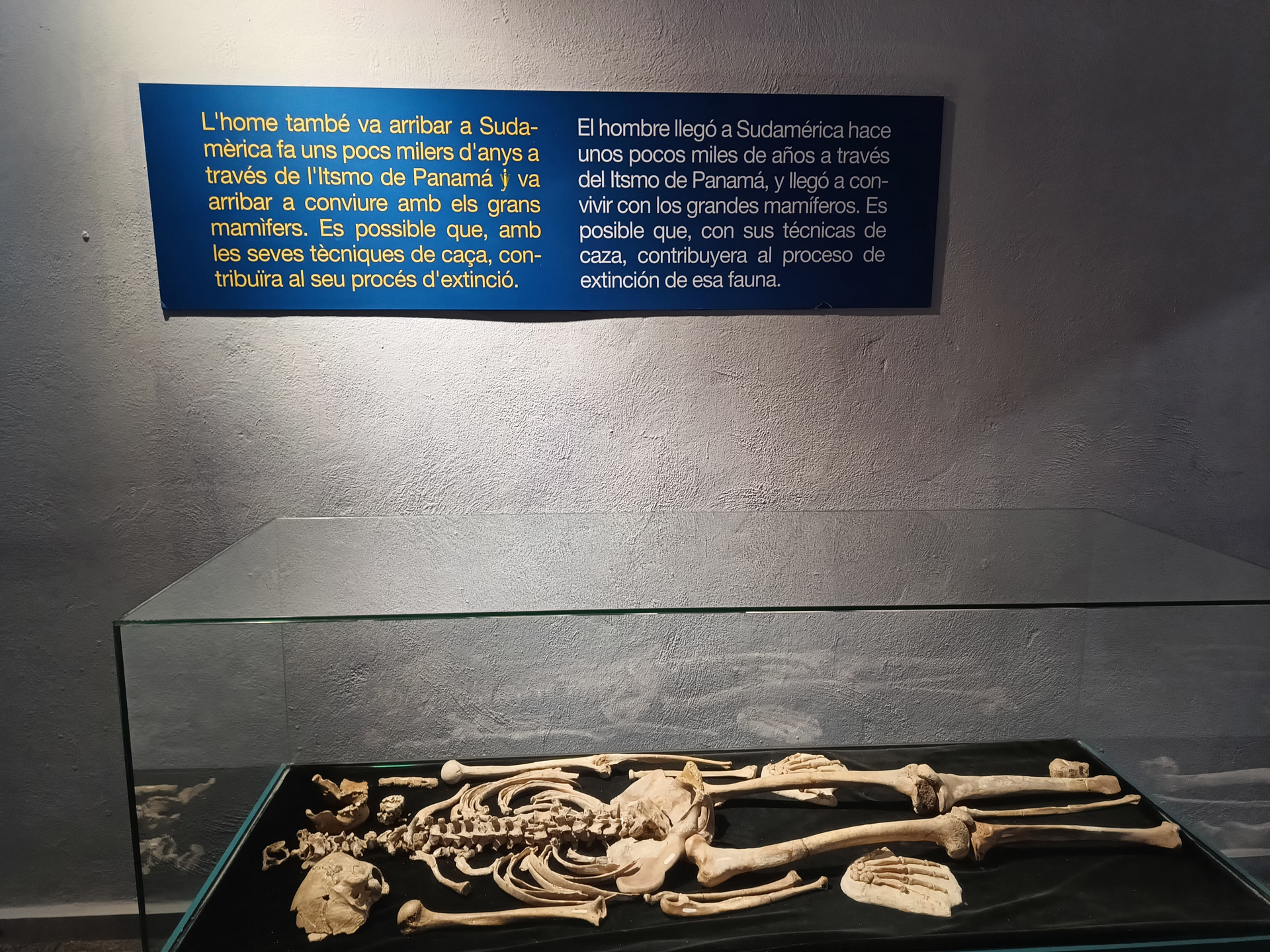Skeleton Botet
Weiterer Titel
Beschreibung
The Italo-Argentinean paleontologist Florentino Ameghino (1853-1911) is often remembered for his proposal of current South America as the cradle of humankind. Among the evidence he used, there was the skeleton of the “Man of the Samborombón”, which he classified as Tertiary, arguing for early human existence in South America.
In fact, this complete skeleton found in 1882 in Arroyo de Samborombón, Argentina, sparked scientific controversy due to its age and origin. Despite intense debate, there was insufficient proof of its old age. The remains were shipped to the city of Valencia, house of a huge collection of South American Pleistocene mammals since 1889. This collections were given to his native city by the Spanish engineer Josep Rodrigo Botet (1842- 915) and later described by the Spanish naturalist Eduardo Boscá (1843-1924), who was in charge of the natural history museum since 1892. Boscá defended the skeleton’s authenticity and antiquity. However, studies in the 1990s dated the skeleton to about 8000 years ago, in the Quaternary period.
References:
- Mª Amparo Salinas, Margarita Belinchón y Esteban J. Sánchez (2000): Una colección para una ciudad, in: Metode 20/03/2000, <https://metode.es/revistas-metode/monograficos/coleccion-rodrigo-botet-valencia.html>.
In fact, this complete skeleton found in 1882 in Arroyo de Samborombón, Argentina, sparked scientific controversy due to its age and origin. Despite intense debate, there was insufficient proof of its old age. The remains were shipped to the city of Valencia, house of a huge collection of South American Pleistocene mammals since 1889. This collections were given to his native city by the Spanish engineer Josep Rodrigo Botet (1842- 915) and later described by the Spanish naturalist Eduardo Boscá (1843-1924), who was in charge of the natural history museum since 1892. Boscá defended the skeleton’s authenticity and antiquity. However, studies in the 1990s dated the skeleton to about 8000 years ago, in the Quaternary period.
References:
- Mª Amparo Salinas, Margarita Belinchón y Esteban J. Sánchez (2000): Una colección para una ciudad, in: Metode 20/03/2000, <https://metode.es/revistas-metode/monograficos/coleccion-rodrigo-botet-valencia.html>.
Kurzbeschreibung
The Italo-Argentinean paleontologist Florentino Ameghino (1853-1911) is often remembered for his proposal of current South America as the cradle of humankind. Among the evidence he used, there was the skeleton of the “Man of the Samborombón”, which he classified as Tertiary, arguing for early human existence in South America.
Institution
Typ
Human skeleton (HOMO SAPIENS)
Thema
paleontology, human species, theories of settlement, South America
Beteiligte Personen und Organisationen
Collected in 1882 in Argentina. Gifted by by the Spanish engineer Josep Rodrigo Botet to city of Valencia. Notes on chemical analysis conducted in the late XIX century or early XX century.
Zeit
1882
Ort
Arroyo de Samborombón, Argentina
Material/Technik
bone
Förderung
Project: SciCoMove - Scientific Collections on the Move: Provincial Museums, Archives and Collecting Practices (1800-1950).
Funding: This project has received funding from the European Union’s Horizon 2020 research and innovation programme under the Marie Skłodowska-Curie grant agreement No 101007579.
The contents of this publication are the sole responsibility of the SciCoMove consortium and do not necessarily reflect the opinion of the European Union.
Funding: This project has received funding from the European Union’s Horizon 2020 research and innovation programme under the Marie Skłodowska-Curie grant agreement No 101007579.
The contents of this publication are the sole responsibility of the SciCoMove consortium and do not necessarily reflect the opinion of the European Union.
Dateien


Quellenangabe
„Skeleton Botet,” SciCoMove, zuletzt aufgerufen am 1. Juli 2025, https://ausstellungen.deutsche-digitale-bibliothek.de/scicomove/items/show/16.
